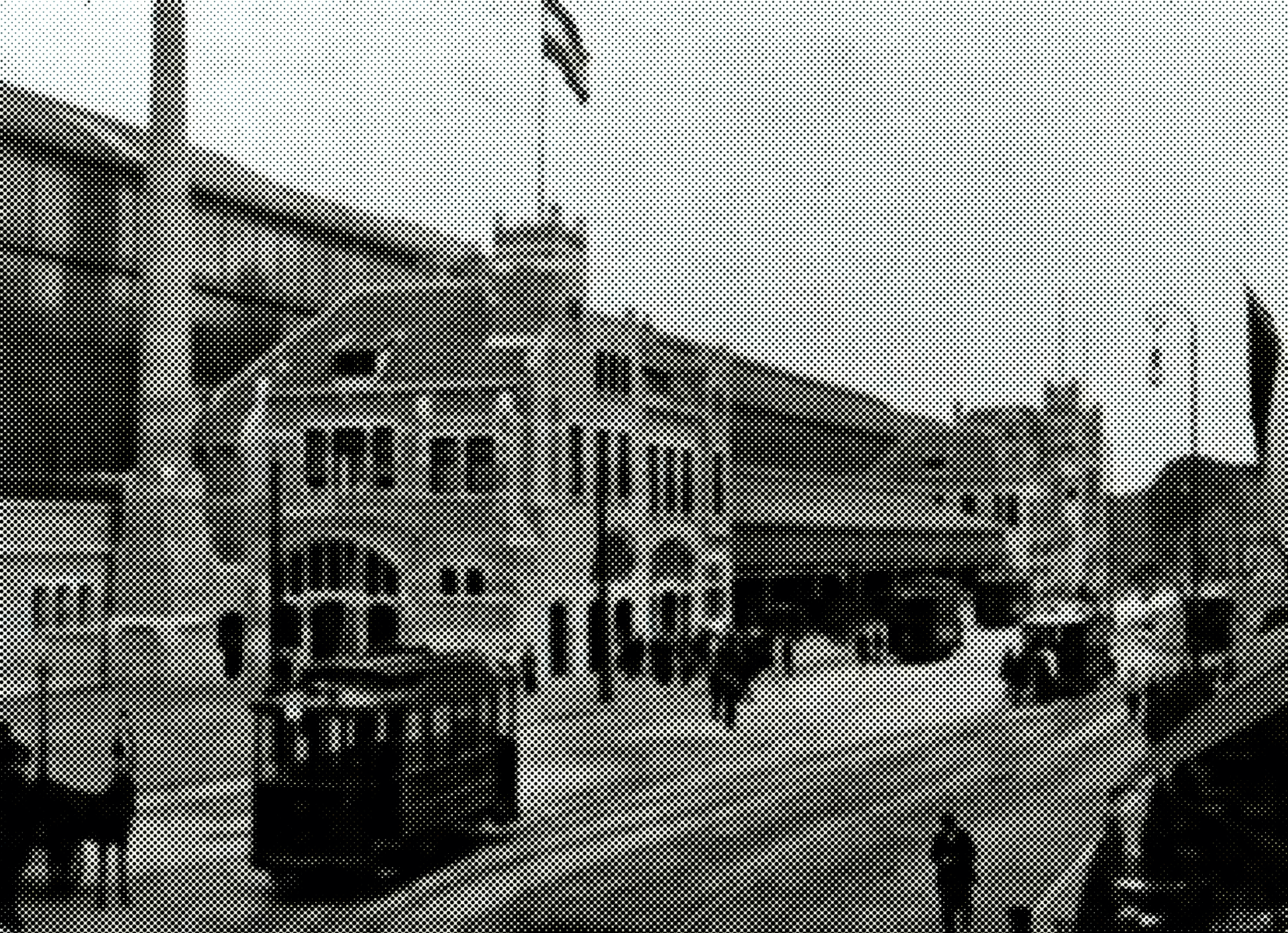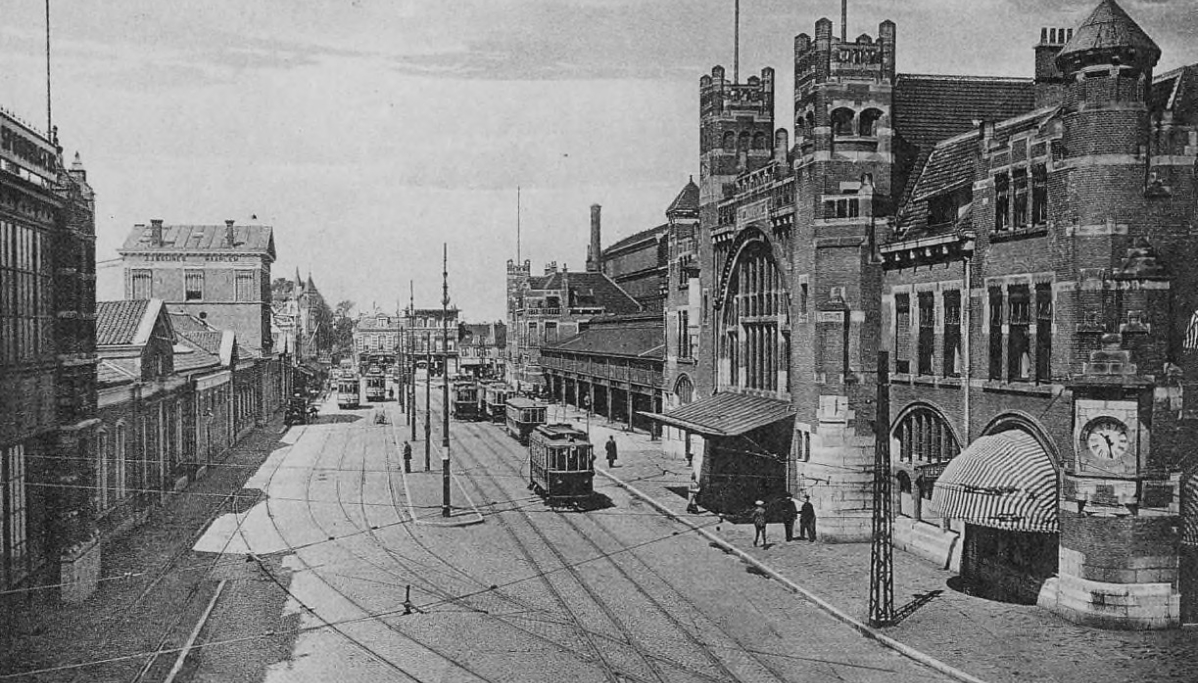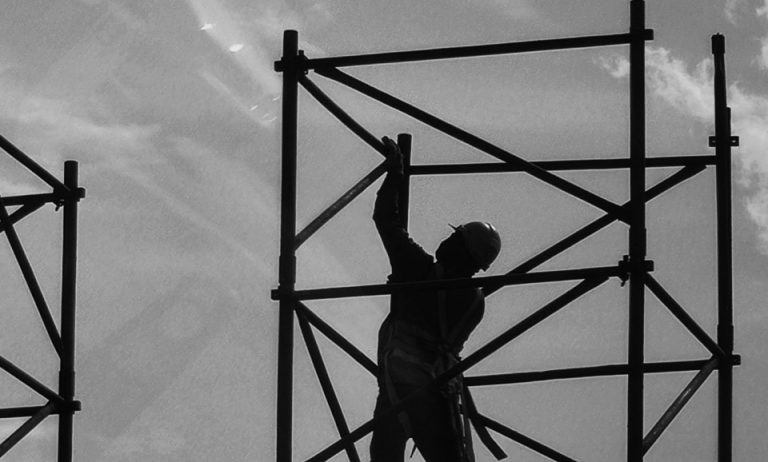
A new chapter
for beresteyn
From almshouses to modernism, Beresteyn and the surrounding area have had a rich history over the past few hundred years. Before we move to the next chapter, here’s a brief look at the history of the area.
When you exit Haarlem station onto the Stationsplein, the first building you’ll see is the big, brown, and not very beautiful Beresteyn complex. Dominating the square and overlooking the bus station, it’s loved by few today.
The history of the site and the surrounding area tell a fascinating tale of the city’s past. From the earliest plans for Haarlem, through to almshouses for the urban poor, the arrival of the railway, and Haarlem’s industrial past and present, the area has seen a huge amount of change.
Early development and courtyards
The land the Beresteyn complex sits on today was once agricultural land outside the city proper. However, by the late 1500s, Haarlems’s defensive walls were extended, and the Nieuwstad, where the station now stands, was incorporated into the municipality. For a long time, the area remained little developed, but eventually almshouses (known as courtyards) for the poor were built. One of these was constructed from funds left by the painter Claes van Beresteyn in 1688 – which is how the current building got its name.
The Beresteyn courtyards were mainly home to elderly, destitute Roman Catholic women, a place to be cared for in their final years. The small, low rise buildings surrounded a fairly sociable central courtyard.
But times changed, and in 1885 the original courtyards were demolished and rebuilt into more bourgeois homes in a neo-Romanesque style. The artistic link continued however – that generation of Beresteyn buildings were part-funded by the sale of paintings by Frans Hals, which had been gathering dust in an attic.

Arrival of the railway and industry
Meanwhile, the area surrounding the Beresteyn complex was changing too. Perhaps the biggest development was the arrival of the railway in Haarlem in 1939, which was then extended to the site of today’s station in 1841. The railways transformed the neighbourhood’s character – slicing through the centre of the Nieuwstad area. The station itself underwent a number of upgrades too, with the most recent being the attractive 1905 design you see today.
The surrounding area was also a hub for industry. Cotton mills and textile factories began popping up in the 1800s, driving Haarlem’s economy forward. But perhaps the biggest industrial firm was Beijines, a carriage and railcar manufacturer. Beijines built a factory on the site that is today the bus station, taking up the entire block. It would have been a major employer – with over 1,300 people working there at its peak.
Post war and modernism
After WWII the Beijines factory moved out of central Haarlem. For a while, the old factory was used as a storage facility, but it was eventually demolished and turned into a car park in the 1950s, and is now the site of the bus station.
For much of the 1960s, the city couldn’t decide what to do with the space, but in 1973, they demolished the residential housing where the Beresteyn complex now sits, and replaced it with the mixed-use development you can see today.
The current Beresteyn complex was never very popular, and even its architect admitted in 1998 “’I was bitten by the dog of the New Objectivity”. As a result, the area’s historical and architectural styles were entirely ignored during the Beresteyn complex’s design.
And this brings us to the present day. There have only been minor changes to the use of land around the station since the 1970s. Yet, as this short history has shown, the area has always undergone change, and will continue to do so.
Timeline

